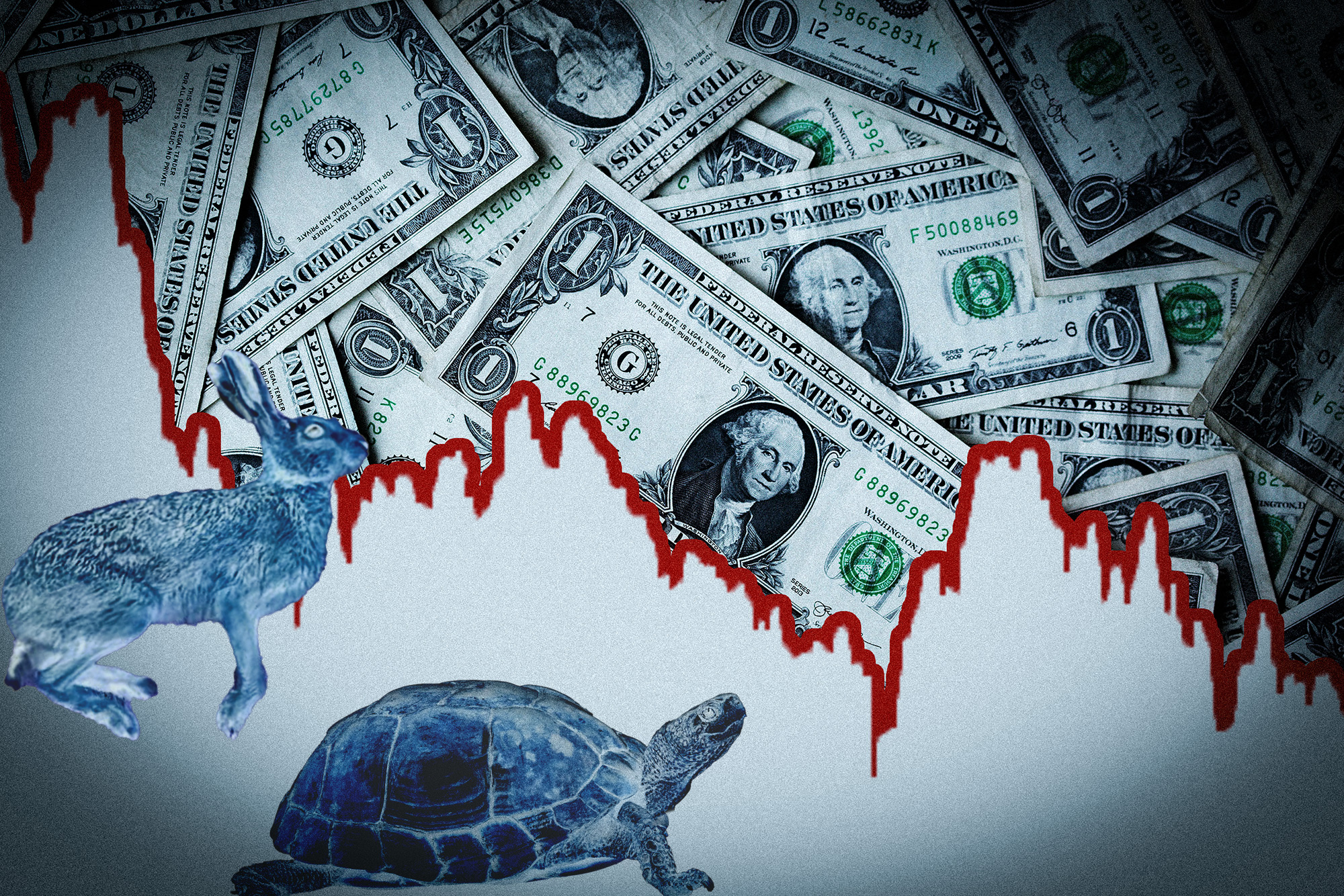Issue:
September 2024 | Deep Dive
Dollar depreciation could plunge currency into unknown territory, FCCJ Deep Dive event told

Be careful of what you wish for, Aesop advised in one of his celebrated fables. Donald Trump, among others, would be well advised to heed that advice, as became clear at a recent FCCJ Deep Dive event titled “Trump, the Dollar and the Economy”.
Once the process of dollar depreciation begins in earnest (likely in September when the US Federal Reserve starts cutting interest rates) there is no telling where it might end. That could have all sorts of repercussions for financial markets and the economy in general.
The greenback is “way overvalued” at present, said Hung Tran, a senior non-resident fellow at the Atlantic Council. “If you look at the Saint Louis Fed real trade weighted index of the dollar, it is about 30% stronger than two decades ago.
"The principle of mean reversion implies a coming correction. It is more likely that the dollar will weaken going forward than continue to strengthen. We will see the Fed easing, starting in September, throughout this year and well into 2025.”
If anyone needed convincing of the need for caution, proof came after the Deep Dive when the Bank of Japan responded to outside pressure and raised rates for only the second time since 2007, causing a tailspin in markets before the central bank backtracked and promised to proceed more cautiously
Trump has recently attempted to talk down the strong dollar, hoping to reduce the chronic U.S. trade deficit. His former trade representative, Robert Lighthizer, has even suggested the need for a new multilateral Plaza Accord to depreciate the currency.
It will not be moves like these, however, that set the dollar on a downward trajectory, but rather the widening of interest rate differentials on changing Fed policy, plus a growing awareness that the U.S. economy is not as strong as it appears to be.
Tran and Paul Sheard, author of the recent Wall Street Journal bestseller The Power of Money, along with veteran Japan analyst Jesper Koll, agreed that the “weaponization” of the dollar could pose a further threat to the currency’s supremacy.
The US economy “looks pretty strong” with surprisingly low unemployment rates, a respectable if not spectacular growth rate and a strong stock market, Sheard said. Inflation is declining steadily in the U.S., and many are expecting two rate cuts from the Fed this year, he added.
Koll said, however, that this may be an overly rosy picture. The costs of U.S. economic success have been “enormous”, he said, with the government pumping $8 trillion of stimulus into a $28 trillion economy, raising the budget deficit and national debt sharply in the process.
That might work against the Fed’s ability to reduce interest rates significantly if the government needs to continue attracting foreign capital to finance its twin fiscal and current account deficits, according to Tran.
The consensus at the Deep Dive was that the dollar is headed downward over the medium and longer term. That is down to economic factors, but the politics of the dollar and potential “de-dollarization trends” in the global economy are also becoming key factors.
The dollar share of global foreign exchange reserves has declined from around 70% 25 years ago to slightly under 60% today, Sheard said, quoting IMF data. But this could decline more rapidly from now on under certain circumstances, he added.
“I'm on the public record as saying I don't like, and I certainly would not advise, policymakers in the U.S. to weaponize the dollar and to weaponize the U.S. financial system and banking system for geopolitical purposes,” Sheard said. “I think that that is tempting fate in the short term because the exorbitant privilege status the dollar has is not God-given. It can be eroded.
“I'm very much in the Alexander Hamilton camp of [preserving] the sanctity of financial contracts in financial markets from politicisation and particularly geopolitical weaponisation. I think that the freezing of Russian foreign exchange reserves, for example is a bridge too far. It sets in train processes around the world that ultimately could lead to an erosion of the dominant position of the dollar.”
Tran noted the increasing tendency for “the U.S. to rely on sanctions and tariffs, as the policy of first choice to try to achieve its political and strategic objectives”. This, he said, “causes many countries to want to [distance] themselves from that.” Under a Trump administration, he went on, geopolitical competition and geoeconomic economic fragmentation “will deepen even more”.
This does not imply that any one single currency will replace the dollar in international trade, Tran said. Instead, it points to an increase in the already apparent trend toward cross-border, bilateral cross-border settlement using local currency. “And the key local currency in this regard is, of course the [Chinese] renminbi,” he added.
According to Koll, “the dollar is incredibly weaponized already. Not just since sanctions against Russia … it was a movement that had already happened way before. There is a great fear that the elites, the people in charge of policy, have lost not the plot but the tools to create broad based sustainable economic growth around the world.”
Anthony Rowley is a columnist and contributor for the South China Morning Post.

